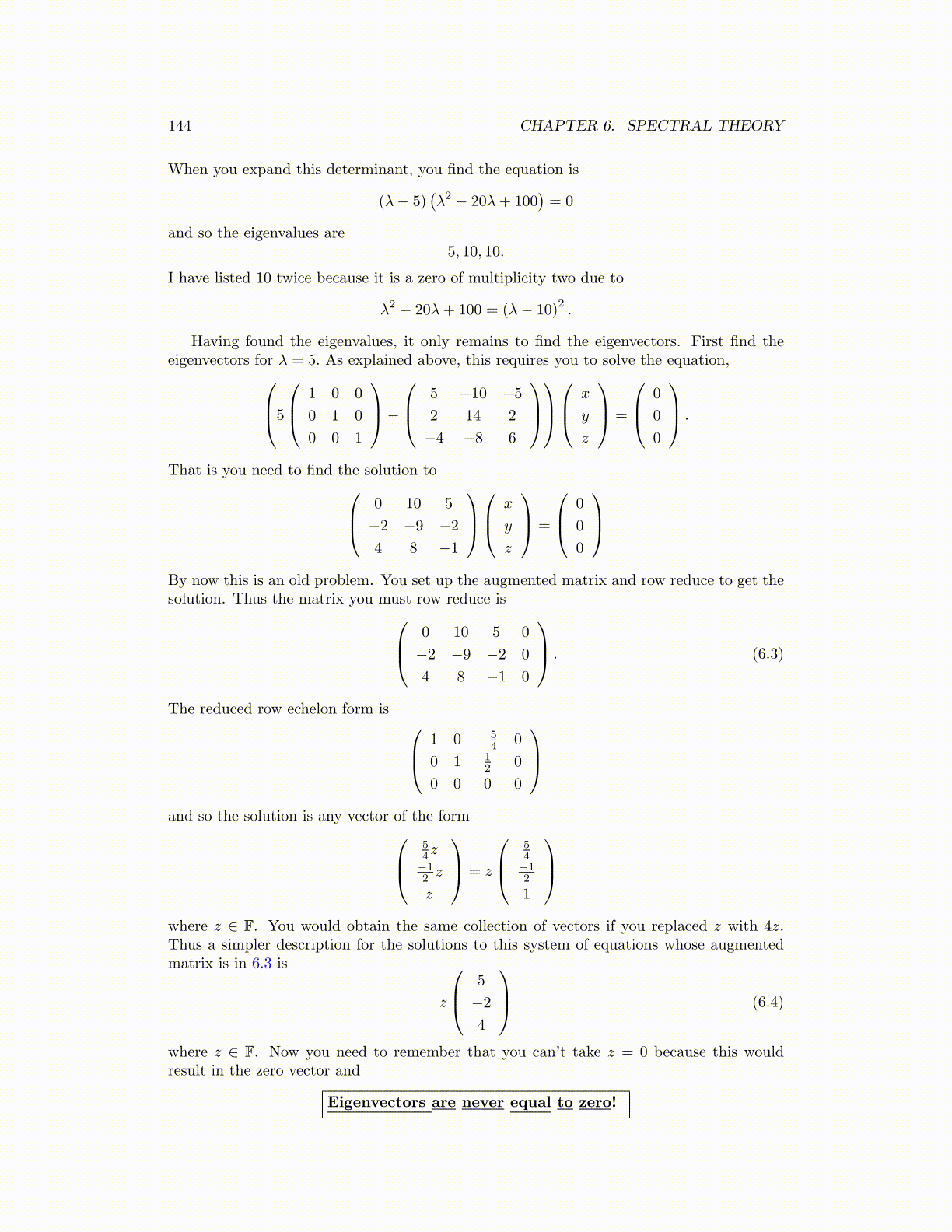
144 CHAPTER 6. SPECTRAL THEORY
When you expand this determinant, you find the equation is
(λ− 5)(λ2 − 20λ+ 100
)= 0
and so the eigenvalues are5, 10, 10.
I have listed 10 twice because it is a zero of multiplicity two due to
λ2 − 20λ+ 100 = (λ− 10)2.
Having found the eigenvalues, it only remains to find the eigenvectors. First find theeigenvectors for λ = 5. As explained above, this requires you to solve the equation,5
1 0 0
0 1 0
0 0 1
−
5 −10 −5
2 14 2
−4 −8 6
x
y
z
=
0
0
0
.
That is you need to find the solution to 0 10 5
−2 −9 −2
4 8 −1
x
y
z
=
0
0
0
By now this is an old problem. You set up the augmented matrix and row reduce to get thesolution. Thus the matrix you must row reduce is 0 10 5 0
−2 −9 −2 0
4 8 −1 0
. (6.3)
The reduced row echelon form is 1 0 − 54 0
0 1 12 0
0 0 0 0
and so the solution is any vector of the form
54z−12 z
z
= z
54−12
1
where z ∈ F. You would obtain the same collection of vectors if you replaced z with 4z.Thus a simpler description for the solutions to this system of equations whose augmentedmatrix is in 6.3 is
z
5
−2
4
(6.4)
where z ∈ F. Now you need to remember that you can’t take z = 0 because this wouldresult in the zero vector and
Eigenvectors are never equal to zero!